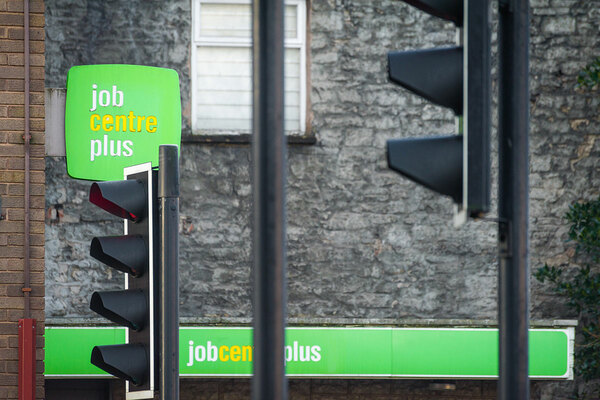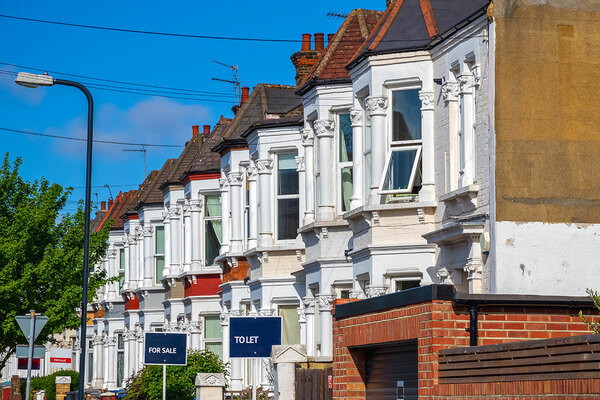Is it time to unfreeze Local Housing Allowance rates to end homelessness?
Since the Local Housing Allowance was frozen, more and more people have been unable to afford their rent. Tim Clark finds out if now is the time to unfreeze it. Illustration by Getty
Like many aspects of the housing sector, the Local Housing Allowance (LHA) was overlooked in the chancellor’s Spending Round last week. Despite vociferous calls from the sector for Sajid Javid to act, the demand fell squarely on deaf ears.
Historically the LHA was supposed to ensure that housing benefit covered the 30% quartile of the most affordable homes in any given area. However, in a bid to rein in government spending, an LHA freeze was put in place in 2016. This is expected to end next April.
Since this was implemented, rent rises across the country mean fewer homes have rents that can now be covered in full by the benefit, leaving tenants to either top up their rent with other benefits, fall into arrears, or in the worst-case scenario be forced to look for alternative accommodation.
So is it time the LHA freeze was lifted for good? And should the sector have to wait until April?
According to organisations such as Crisis, the Local Government Association (LGA) and the Chartered Institute of Housing (CIH), now is the time. In the lead-up to last week’s Spending Round, restoring the LHA to levels that cover the lowest 30% of rents in all areas was one of their biggest aims.
Clear links between the LHA and increased homelessness have been put forward in reports by charities Crisis and Shelter. The former feels so strongly that the issue needs to be addressed, that two days before the Spending Round it launched its Cover the Cost campaign to restore LHA rates to prevent homelessness.
Although he did not mention the LHA directly in last week’s Spending Round, Mr Javid did state that “there are too many people sleeping rough on our streets” and that “the human cost is too high”.
In one of the rare housing giveaways, he gave £54m to help tackle homelessness. But while this was welcomed, many argue that addressing the LHA freeze is more crucial than short-term cash injections, and that the government needs to pay attention to the long-term effects of the freeze.
According to Crisis, lifting LHA rates would also have the potential to help 35,000 children out of poverty over the next three years.
“We know that homelessness can be ended, but without measures such as these prioritised in government’s spending decisions, it will only continue to rise”
In its Cover the Cost report, Crisis estimates that the cost to the government of restoring LHA rates would be £3.3bn over three years, but this is offset by the net savings of £2.1bn as a result of a lower need for homelessness services, health services and spending on the criminal justice system. With other benefits such as less demand for temporary accommodation, Crisis estimates that wider benefits could total £5.5bn.
However, persuading the Treasury of this is clearly tricky.
Melanie Rees, head of policy and external affairs at the CIH, says: “[The LHA] has got seriously out of kilter with rents. It was supposed to cover the lowest 30%, and we have been saying, can government restore that link? It is about convincing the Treasury that needs to happen because there are clear links to homelessness – both preventing it from happening and helping those who are already homeless.”
“Every day through our work we hear from people whose housing benefit simply doesn’t cover the cost of their rent, leaving them under immense financial pressure and at genuine risk of homelessness”
One local government expert believes that the LHA costs cannot be looked at in isolation. “The problem is that the LHA freeze leads to funds being used inefficiently, with local authorities diverting resources to cover the cost of the freeze. You build a layer of bureaucracy unnecessarily and push people into homelessness, which adds to the costs to the Treasury and is daft,” they say.
Responding to the Spending Round, Jon Sparkes, chief executive of Crisis, notes the extra costs incurred as a result of the freeze.
“Every day through our work we hear from people whose housing benefit simply doesn’t cover the cost of their rent, leaving them under immense financial pressure and at genuine risk of homelessness,” he says.
“We know that homelessness can be ended, but without measures such as these prioritised in government’s spending decisions, it will only continue to rise.”
Tony Stacey, chief executive of South Yorkshire Housing Association, says he is disappointed in the government’s lack of action last week. “It’s fine to have bits in there for homelessness and rough sleeping, but it’s just a sticking plaster,” he says.
“When the bath you’re trying to top up is so leaky, the level of services overall is going to go down,” he adds.
The LHA freeze has had an impact across every region of the UK. However, the size of the deficit built up in individual regions varies widely. Unsurprisingly, areas such as the South East, where rents have risen most steeply, are worst hit. Crisis’ report states that in York, the gap is approximately £53.40 a month. In London it is four times more, at £227.80.
“It’s fine to have bits in there for homelessness and rough sleeping, but it’s just a sticking plaster”
The number of properties in any region that are affordable for families on housing benefit also varies widely. In Caerphilly in Wales, 29% of privately rented two-bedroom properties are affordable for a small family, whereas only 7% of homes in Bath are affordable, and no homes in central London are affordable.
According to the local government expert we speak to, the LHA has a number of flaws that the Department for Work and Pensions and the Treasury need to address. These include a lack of detailed data on realistic rental rates in individual areas, which has led to artificially low rent estimates.
The expert also says: “The Treasury’s main concern is that if you lift the LHA you would lift rents. The counter argument would be that cutting the LHA hasn’t led to any rents going down.”
As the arguments for raising the LHA continue to grow, the pressure from the sector will be on the government to change course sooner rather than later. And that voice will only get louder and louder.
At a glance: Local Housing Allowance
Local Housing Allowance (LHA), introduced by the New Labour government of Gordon Brown in 2008, is used to determine housing benefit entitlement for people living in the private rented sector.
The LHA rate for an individual is based on a number of factors: the number of bedrooms deemed to be required by the claimant and the region in which they live (the broad rental market area).
Rates are set in line with the 30th percentile (ie the lowest 30% of rents) in the broad rental market area.
However, as part of government measures to cut benefit spending, LHA rates have been frozen since April 2016 until next year.
Charities have warned that this is exacerbating homelessness and reducing affordable housing options, particularly in areas of high rental increases as gaps between the frozen LHA rate and rents open.














